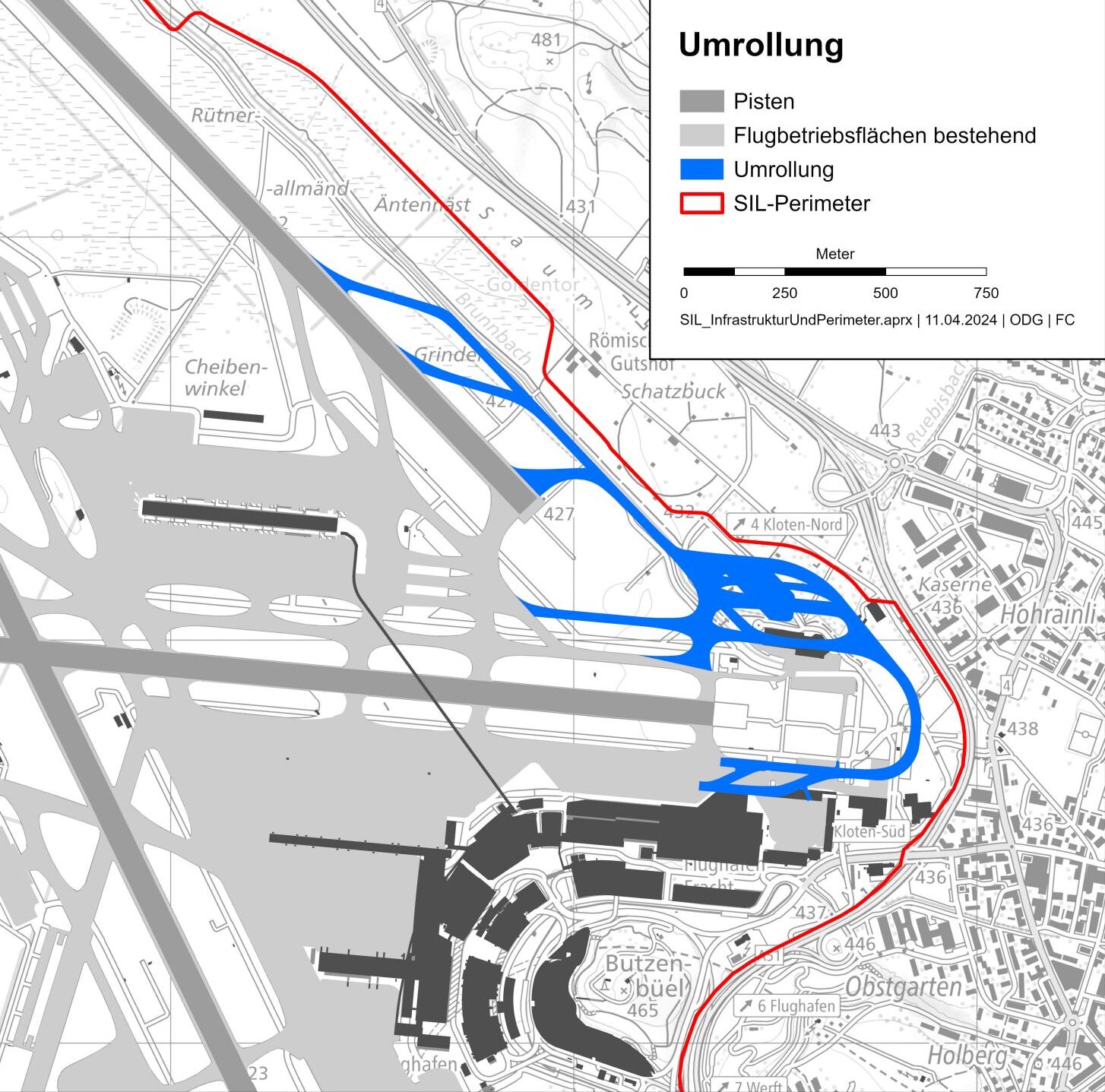The Federal Department of the Environment, Transport, Energy and Communications (UVEK) has granted planning permission to Zurich Airport AG for a new taxiway to bypass Runway 28.
This measure aims to enhance safety at Zurich Airport. (See picture attached)
Thanks to the rerouting, the number of runway crossings by landing or departing aircraft will be significantly reduced in the future. This fulfills a requirement from the Swiss Federal Office of Civil Aviation (FOCA) stemming from a safety review conducted in 2012. Runway 10-28 is essential for all operational scenarios involving takeoffs and landings. It divides Zurich Airport’s apron into two halves. In the normal operating mode (Northern Concept), it is required for westbound departures, with arrivals from the north using Runway 14. To reach Docks A and B, all landing aircraft must cross Runway 10-28.
Under the second most important operational concept (Eastern Concept) involving arrivals from the east on Runway 28, departing aircraft from Docks A and B also need to cross Runway 10-28 to reach Runway 32 heading north.
A safety review of the airport requested by FOCA in 2012 revealed that the approximately 100,000 runway crossings annually pose an increased safety risk. To significantly reduce these crossings, Zurich Airport AG submitted a request to UVEK in 2020 for the rerouting of Runway 28.
As a result of the rerouting, several buildings for general and business aviation will be relocated. Replacement buildings are planned in the western part of the airport. Additionally, given that the project area includes a protected moor, new moor areas will be created to enhance the flat moor’s ecological value, according to the Federal Office of Civil Aviation.
Furthermore, ecological enhancements are planned between Runway 14-32 and the A51 motorway (Kloten–Bülach) to compensate for the environmental impacts.
Several objections were raised against the project, primarily from environmental organizations and directly affected parties. UVEK largely dismissed these objections.
The decision by UVEK can be appealed to the Federal Administrative Court.

